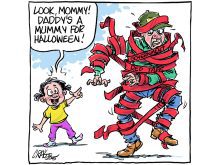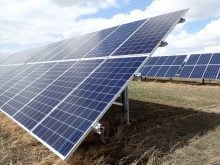Federal Liberals stream into Vancouver next week for the coronation of their 12th leader, Toronto MP Michael Ignatieff, and they arrive with both hope and soap.
The hope comes because Ignatieff, the acting leader since a caucus decision in December, has given the party a boost, seems focused on rebuilding and has engineered a comeback in public opinion polls that puts the Liberals within striking distance of winning an election.
For a party mainly dedicated to being in power and pursuing whatever policy it takes – right/left, up/down, authoritarian/libertarian – to achieve that goal, the whiff of improved poll numbers is a political aphrodisiac.
Read Also

Farmer ownership cannot be seen as a guarantee for success
It’s a powerful movement when people band together to form co-ops and credit unions, but member ownership is no guarantee of success.
The soap comes in handy as the party tries to cleanse itself of past laziness, entitlement presumptions and alienation from the voters the party alleges to represent.
Indeed, the party has fallen on hard times. Much scrubbing of old attitudes is required.
A party renewal report that will be debated and approved at the early May convention in Vancouver proposes that the party quit writing off large rural areas of the country.
“We must commit to restoring links that have fallen into neglect,” said the party renewal report published in April. “We must respect the diversity of views and perspectives that exist across Canada. While being confident in our beliefs, we must also be humble in our approach.”
Cue the country music and a repetition of Ignatieff’s assertion that he does not want to lead an urban party and that he has deep rural roots himself, despite his urban and urbane privileged upbringing and life.
Regaining a foothold in rural Canada will be a tough sell for the Liberals, however much political capital Ignatieff expends.
In the last election, voters gave the Liberals the lowest share of the popular vote since the party was formed in the 1870s. Stéphane Dion became only the second Liberal leader in history not to become prime minister.
The party continued to lose agricultural and rural seats, essentially becoming the political party of downtown Toronto, Montreal and Vancouver.
Remarkable about the latest installment in the history of the party that has dominated Canadian politics for more than a century is how far the Liberals have fallen.
Party fundraising lags behind the Conservatives, its connections to vast swaths of Canadian voters has withered, it is little more than a shell in many ridings and it often is outworked by political opponents.
The Liberal report’s analysis starts from the usual arrogance. “The Liberal Party of Canada is a national institution.”
But it concedes the party has lost its way and must do whatever it can to reconnect with Canadians.
That includes rural and western Canadians, through a plan that has the party insisting on a campaign and a Liberal presence in every riding, Liberal winnable or not.
It makes sense, given that every vote wins public funding for a political party, even in hopeless ridings. “No vote is a wasted vote,” says the analysis.
For all that, and despite Ignatieff’s claim that he loves the smell of cow manure, the Liberals have a long hill to climb in rural Canada.
Still, a politically competitive culture in one-party states like Alberta and much of rural Canada could only be good news for voters.














